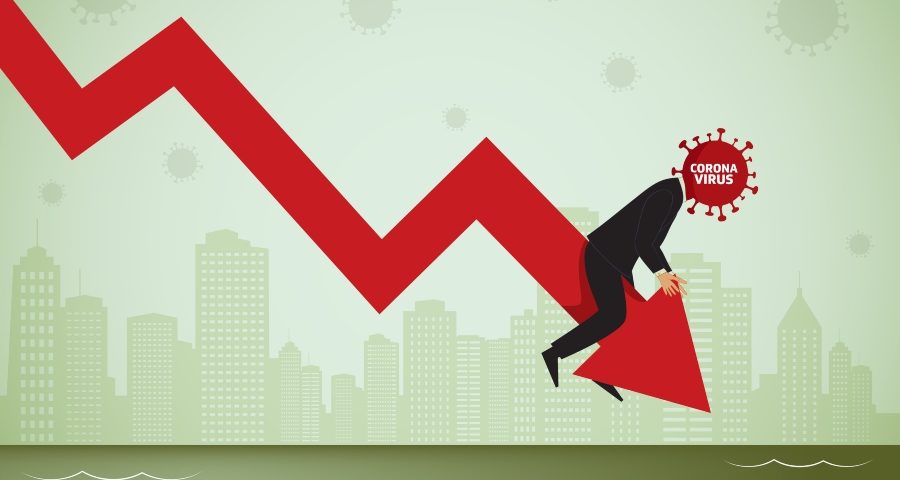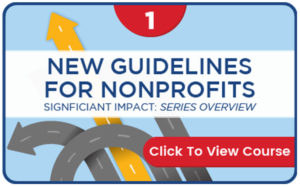Charities Can Survive COVID-19 – Lessons From 2008

Charities can survive COVID-19 by applying what we learned from the nonprofits who survived the Greatest Downturn In The Economy Since The Great Depression. Simply review National Development Institute (NDI) & Clemson University’s clinical study evaluating 2008-2011 charitable outcomes involving 470 nonprofit leaders who completed a ninety-item, online survey examining their capacity building initiatives. We asked nonprofit leaders to consider a specific capacity building effort they were undertaking in the future. We examined their underlying attitudes toward that effort, what the leader imagined that others thought about the effort and whether or not the opinions of others were important to them, and finally, whether or not they thought they had sufficient ability and liberty to control the capacity building endeavor. The purpose of the study was to examine leaders’ motivations for building organizational capacity, the organizational dynamics present, and the effects of these two things on nonprofit performance and productivity. The survey included questions to determine factors that marked high performing nonprofits. Through this study, the researchers discovered which attitudes, social norms, and control beliefs influenced their intention to build capacity. Furthermore, the study analyzed the context in which those beliefs were relevant.
What makes a nonprofit leader intend to build future capacity? Drs. Kimberley Brown and Kathleen Robinson determined that intention does not arise in a vacuum[1]. According to the psychological Theory of Planned Behavior[2], the intention to perform any action is based on three things:
- the actor’s attitude toward that behavior,
- the social norms that they believe surround the action,
- and the actor’s sense of control over performing the behavior.
According to this theory, “attitude” means whether-or-not the action is viewed as having positive or negative outcomes, whether it is pleasant or unpleasant, and whether it is seen as easy or difficult to perform. “Social norms” are the feelings that the actor thinks are held by other people toward the behavior. A sense of “Behavioral Control” is the actor’s beliefs about their ability to carry out the action, and whether or not there are facilitating or inhibiting factors present.
In the NDI-Clemson study, five particular elements of attitude, norms, and behavioral control were found to significantly influence a nonprofit leader’s intention to build capacity in the future. These elements are:
- the leader’s attitude about whether-or-not the capacity building effort is a good or bad idea,
- the belief that others expected them to undertake the activity (a social norm), and the behavior control beliefs about whether-or-not
- they can manage and lead the effort,
- the decision to undertake the effort is within their control, and finally,
- whether or not performing the activity is entirely up to them.
The stronger a person’s intentions to build capacity the more likely it is that it will lead to action. These findings may at first glance not seem all that earth shaking. But what is most important is the revelation of factors that affect the beliefs summarized above. (These important factors are reviewed in enormous detail in National Association of Nonprofit Organizations & Executives’ New Guidelines for Nonprofits.)
VISIT HERE TO GET STARTED WITH NANOE
There is growing evidence that organizations that continuously build capacity experience growth and, those that do not, experience no growth or decline. Thus, knowing what significantly strengthens leaders’ intention to build capacity is extremely important to those interested in fortifying the sector.
The NDI-Clemson study also identified the environmental factors that are present when these five beliefs exist. We identified the significant effects of a few organizational and respondent characteristics, 16 trust relationships, 11 board governance practices and 6 organizational effectiveness indicators as paramount. In addition, a few important finance-related factors were found that significantly affected leaders’ beliefs about building capacity. It turns out that finance-related factors had major effects on shaping their intentions.
Finally, those leaders with a preponderance of markers indicating that they intended to build capacity (15% of the sample) experienced these outcomes:
- They built more capacity over a five-year period than those nonprofits who indicated they stagnated or declined during the same time period.
- They grew budget, programs & donors, despite the recession.
- They grew their nonprofits regardless of the size/involvement of their board.
- They externalized their mission for the purpose of fundraising.
- They developed board members who evaluated the chief executive and promoted the goals and values of the CEO.
A national dialogue has begun on what is an appropriate and useful role and function of the board of directors. The Board’s purpose and roles are being challenged as times change. The findings presented in this study contribute to identifying a important ways in which boards affected leaders’ beliefs about building capacity, which in turn affected the strength of their intentions to build capacity. Boards have a powerful impact on directors’ beliefs which in turn shape their actions or inactions!
VISIT HERE FOR MORE ARTICLES LIKE CHARITIES CAN SURVIVE COVID-19
Ultimately, the research performed by National Development Institute and Clemson University led to the formation of the National Association of Nonprofit Organizations & Executives. NANOE was created to disseminate these findings through New Guidelines for Nonprofits (3rd Edition). New Guidelines for Nonprofit is based on the work of the high performing executives who achieved significant impact because they intended to build capacity. This 1,100 page desk reference also includes 6 hours of video training and a Certified Nonprofit Executive (CNE) Credential.
New Guidelines for Nonprofits has been divided into six sections:
- Guideline #1 – Network & Engage – Harness The Power of Differentiated Relationships
- Guideline #2 – Strong CEOs – Character, Competence, Courage, Vision, Actions & Achievements
- Guideline #3 – Build Capacity – Secure Technology, Equipment, Legacy, Facilities and Working Capital
- Guideline #4 – Boost Capacity – Secure Opportunity, Risk and Change Capital for Significant Impact
- Guideline #5 – Evaluate Impact – Before, During and After Strategic Growth Actions
- Guideline #6 – System Shock – Leadership Structures and Governance Cultures that Soar
Please visit https://NANOE.org to join the National Association of Nonprofit Organizations & Executives to receive your copy of New Guidelines for Nonprofits.
It contains the 2008-2011 information you require ensuring Charities Can Survive COVID-19.
Sincerely Yours,
Jimmy LaRose, CNE, CDE, CNC
NANOE Co-Founder
Charities Can Survive COVID-19 – Lessons From 2008 was authored by Jimmy LaRose
[1] Brown, K. (2012). Factors Predicting Nonprofit Leaders Intentions to Build Capacity. Clemson, S.C.: Clemson University, Institute on Family and Neighborhood Life.
[2] Aizen, I. (1985). From intentions to actions: A theory of planned behavior. In J. Kuhl & J. Beckmann (Eds.), Action Control: From Cognition to Behavior. Berlin, Heidelber, New York: Springer-Verlag.


5 Comments
[…] CHARITIES CAN SURVIVE COVID-19 – LESSONS FROM 2008 […]
[…] Drs. Kimberley Brown and Kathleen Robinson determined that intention does not arise in a vacuum[1]. According to the psychological Theory of Planned Behavior[2], the intention to perform any action […]
[…] For more articles like Nonprofit Answers to COVID-19 – TWO QUESTIONS BY JACK HORAK VISIT HERE […]
[…] For more articles like Major Donors Answer Fundraising Question: Should My Nonprofit Ask Now? VISIT HERE […]
Thanks for sharing this informative content about charities who’re helping and support in covid-19 and help people to survive.